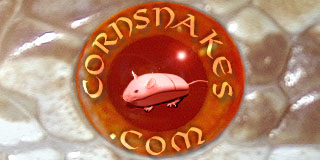People who foster rescue animals are putting in a lot of work in order to help out an animal. There might be the occasional exception, but I would think they would be more than willing to take some time to pass on basic info such as what the snake has been eating. The rescue organization may or may not have that info handy at the show (although with BPs they are really doing the animal a disservice if they can't even tell you what it has been eating), but if you are able to contact them after the fact, they should be able to get it to you.
To convert a BP from one food type to another, I have had good success by offering live prey of the new type. Some times they'll skip a few meals, but the live prey is pretty enticing to them so usually they'll take it pretty quickly. Then, once they are taking the new prey type without hesitation and I want to convert them to f/t, I defrost the prey item in the room where they are so the smell of it gets them into eating mode. Once it is fully defrosted, I get a cup of VERY hot water (close to boiling, and if it does boil, I don't consider that too hot). Dip the head of the prey item in the water for about 10 seconds, then allow it to drip for a couple seconds which also allows the surface to cool enough it won't burn the snake. Dangle this in front of the snake. Most of mine struck aggressively within maybe 10 seconds the first time f/t was offered to them this way.
BPs are notoriously picky eaters, though, so you can't count on this to work 100%. Some will demand a certain prey type, and some will demand live. They can also fast for a really long time, so the idea of just letting them get hungry by missing a few meals if they refuse the new prey type won't necessarily work. Luckily, they can be perfectly healthy eating either rats or mice. Also, if/when they decide to strike, they are efficient killing machines so I believe that feeding live is not as much of a danger with them as it is with corns. Of course, you should never leave unattended live prey in with any snake.
If you do get a BP, and have trouble getting it to eat, just post, and I'm sure you'll get plenty of advice!
I totally agree with your husband's idea of getting a different species for your second snake. I love both BPs and corns, but in totally different ways. BPs are excellent for cuddling on the couch while watching a tv show; corns are much more active and interesting to watch in their viv and to have a more active handling session.
And yes, I think the 29 gallon on its side will be big enough for a BP for its whole life. the CB-70 tub is sort of a standard in BPs, and the dimensions of that are about 33x18 if I remember correctly.
